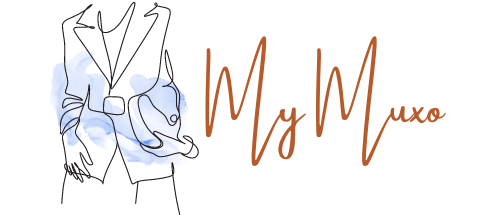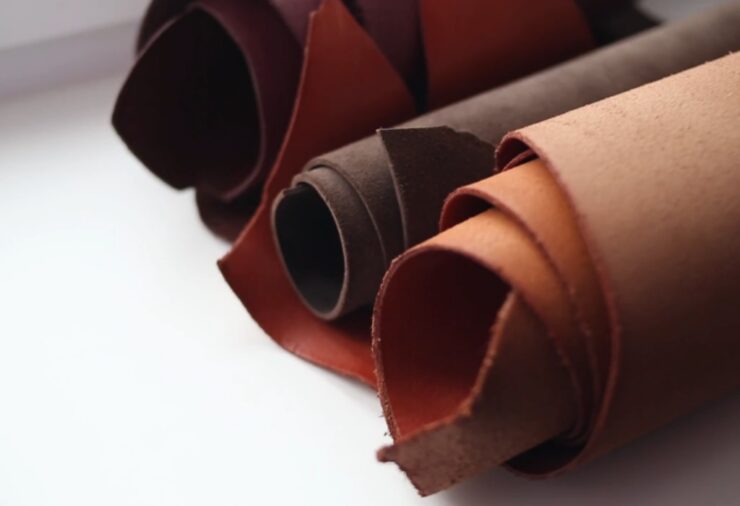Leather has been an integral part of our lives for millennia. Its diverse uses range from fashion to furniture, from bags to boots. When you’re shopping for a new leather product, however, the various types of leather may be confusing. Among the plethora of choices, three types often stand out: Split Leather, Suede, and Nubuck. But what is the difference between them? In this comprehensive guide, we’ll examine these leather types in detail, shedding light on their unique characteristics and providing valuable insights.
A Brief Overview
Before diving into the specifics, it’s essential to understand what leather is. In the simplest terms, leather is animal hide, often from cows, that has been tanned to make it durable and suitable for use. Tanning is a process that transforms the rawhide into a material that won’t decompose, making it ideal for various applications.
Leather types can be divided based on numerous factors: the animal it originates from, the part of the hide used, the tanning process, and the finish applied. Today, we’ll focus on the part of the hide used and the finish applied, which are crucial in distinguishing Split Leather, Suede, and Nubuck.
What is Split Leather?
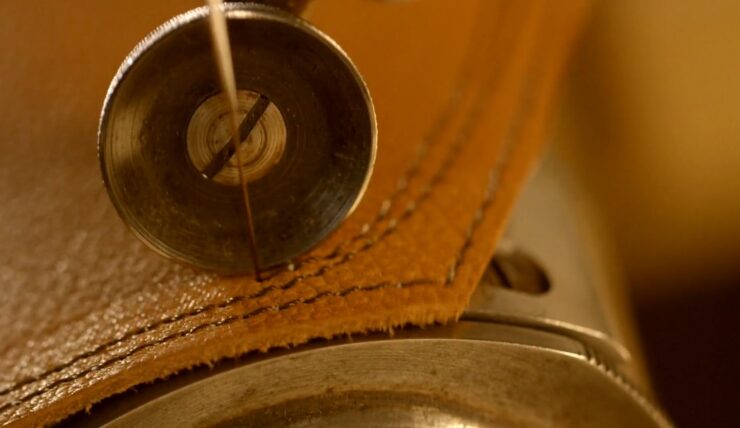
Split Leather is one of the most commonly used types of leather in the market, though its name often goes unrecognized by the average consumer.
Production and Characteristics
The production process starts with a rawhide. This hide is thick, too thick for most practical uses. So, it’s sliced horizontally into layers. The outermost layer, which had direct exposure to the air, is known as ‘top grain’ leather. The layers underneath are what we call ‘split’ leather.
Split Leather doesn’t have the same natural markings or the strength of top grain leather, which often makes it less desirable. However, to enhance its look and durability, it is typically embossed or pigmented. Embossing imparts a design or pattern onto the leather, while pigmentation provides color and protection.
Uses and Care
You’ll frequently find Split Leather in furniture and shoes due to its affordability and availability. To maintain Split Leather, a regular cleaning with a damp cloth and occasional application of a specific leather conditioner can help prolong its life.
What is Suede?
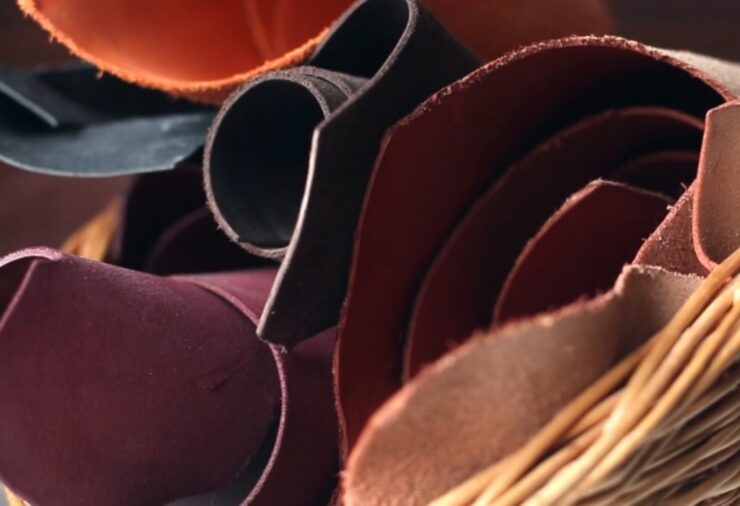
If you’ve ever touched Suede, you’d remember its soft and fuzzy feel. It’s this unique texture that often distinguishes Suede from other types of leather.
Production and Characteristics
Suede is also a product of splitting the hide. But unlike Split Leather, which comes from the lower layers of the hide, Suede is produced by roughening the interior side of the top grain layer. This results in a plush, napped finish, which is the defining feature of Suede.
The downside to this soft, velvety texture is that Suede is less durable than other leathers. It also stains easily, and water can damage its texture, which brings us to its care.
Uses and Care
Suede is widely used in fashion, particularly in clothing, gloves, and shoes. To care for Suede, avoid getting it wet. Special Suede brushes are available to help maintain its nap, and there are protective sprays to guard against stains and water damage.
What is Nubuck?
Nubuck is often considered the midpoint between Split Leather and Suede, retaining aspects of both.
Production and Characteristics
Nubuck is produced from the outer side of a hide, the ‘top grain’ layer. It undergoes a process called ‘sanding’, where the surface is lightly abraded to create a velvety texture similar to Suede but with more durability due to the strength of the top grain leather.
However, like Suede, Nubuck is susceptible to staining and water damage due to its brushed surface.
Uses and Care
Nubuck finds its use mainly in high-end products like furniture, handbags, and shoes. The care for Nubuck is similar to that for Suede. Use a nubuck brush to maintain the nap, and consider using a protective spray to ward off potential damage.
Comparison: Split Leather vs. Suede vs. Nubuck
In terms of durability and price, Split Leather comes out on top, making it a cost-effective choice. Suede, with its unique texture, brings a different aesthetic to products but requires more care. Nubuck, combining the durability of Split Leather with the velvety feel of Suede, sits at a higher price point but offers a distinct luxury feel.
The Manufacturing Process: An In-depth Look
Now that we have a foundational understanding of what Split Leather, Suede, and Nubuck are, let’s delve deeper into the manufacturing processes behind these materials. Understanding these processes can provide further insights into the characteristics of each type of leather.
Creating Split Leather
The process of creating Split Leather begins with the initial splitting of the rawhide. Once the hide has been split into multiple layers, the bottom layers, or ‘splits,’ are taken and often further divided into thinner layers to produce the desired thickness for various applications.
These splits then undergo a process known as ‘correcting.’ This process uses heavy machinery to remove any remaining grain and imperfections on the surface of the leather. After correcting, the leather is often pigmented or embossed to enhance its appearance and strength. The final step is the application of a protective sealant to provide durability and resistance to staining and water.
Creating Suede
In contrast to Split Leather, the manufacturing process of Suede involves working on the inner layers of the hide, known as the ‘flesh side.’ These layers are buffed or sanded to raise a soft nap, giving the Suede its characteristic velvet-like touch.
After buffing, the Suede is typically dyed to the desired color. Dyeing suede requires special care to ensure the dye penetrates the dense fibers evenly without damaging the nap. The final stage in Suede production often involves treating the leather with special chemicals to enhance its resistance to water and stains.
Creating Nubuck
The production of Nubuck shares similarities with both Split Leather and Suede. The initial hide is split as in the production of Split Leather, but Nubuck uses the top grain layer, the same layer used for Suede. However, unlike Suede, the top or ‘grain’ side of this layer is sanded or buffed to create a nap.
The resulting Nubuck leather possesses a fine, velvety surface while maintaining the strength and durability of the top grain. Similar to Suede, Nubuck leather is dyed and may also be treated with a protective layer to increase its resistance to wear and tear.
Beyond Cattle: Other Sources of Leather
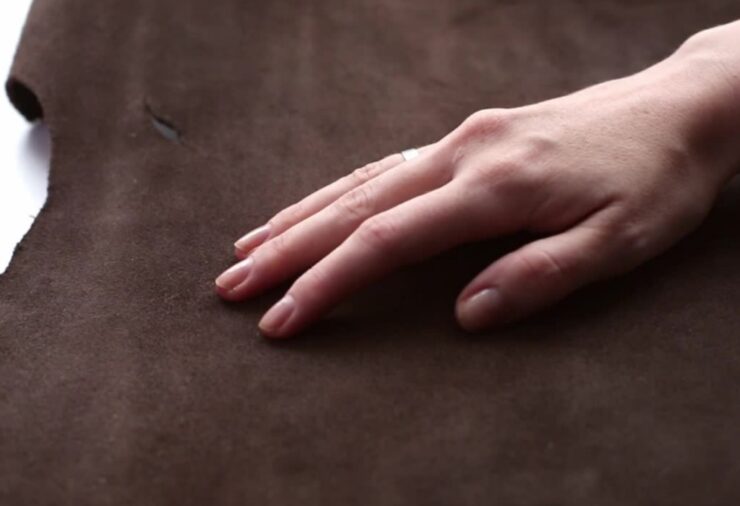
While cattle leather is the most common source for Split Leather, Suede, and Nubuck, it is by no means the only one. There’s a wide range of animals whose hides are used to produce these types of leather. Each source contributes unique characteristics to the final product.
Pigskin is frequently used to produce Suede due to its inherently soft and pliable nature. In contrast, the hide from deer is particularly tough and durable, making it a good candidate for high-wear Nubuck products. Lamb and goat hides are also used, offering a balance of softness and strength that’s ideal for Split Leather.
The Environmental Impact and Sustainable Alternatives
The leather industry, like many others, comes with its environmental concerns. From the impact of raising animals to the use of chemicals in the tanning and finishing processes, each stage has its potential for harm.
For those concerned about the environmental implications of leather production, there are sustainable alternatives to consider. Recycled leather and leather made from plant-based materials, such as mushroom leather and pineapple leather, are gaining popularity. Additionally, the industry has been making strides in improving the sustainability of traditional leather production methods.
Final Words
Whether it’s the cost-effective Split Leather, the plush Suede, or the luxurious Nubuck, each type has its unique charm and purpose. Understanding the differences between them can make your shopping experience more informed, and you’ll be more equipped to care for your leather items, ensuring they stand the test of time.
We hope this guide has helped you navigate the intricate world of leather. The next time you encounter these terms, whether you’re shopping for a new jacket or looking to revamp your living room with a leather sofa, you’ll know exactly what they mean.
